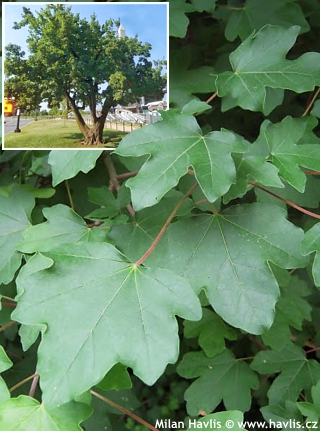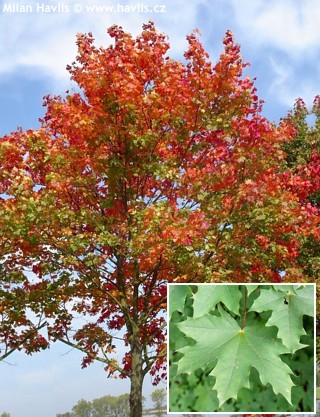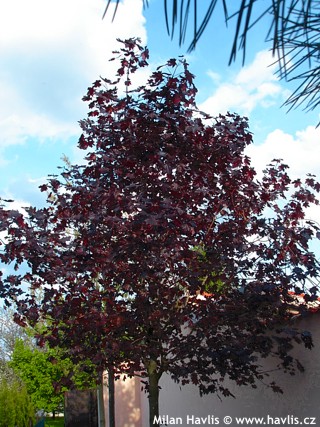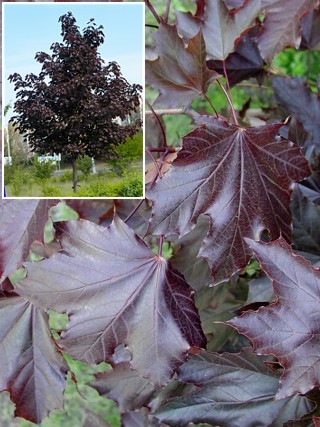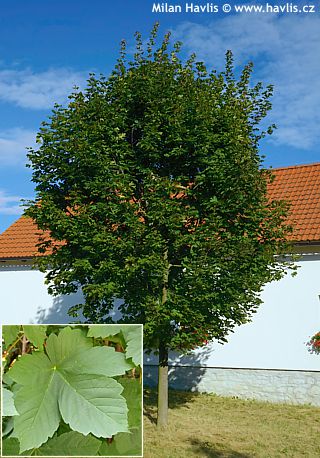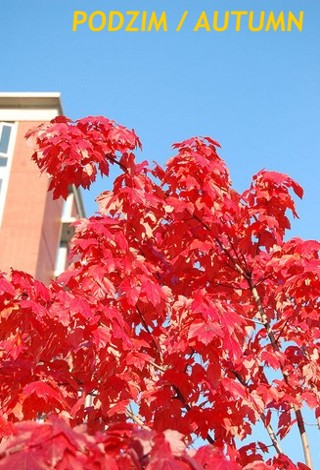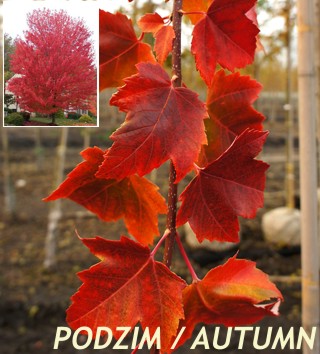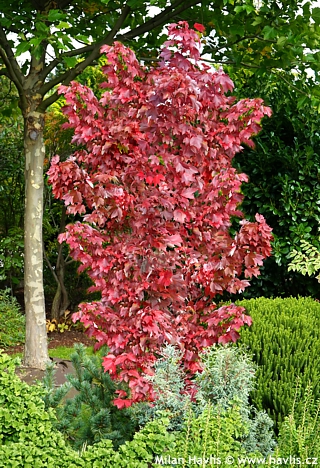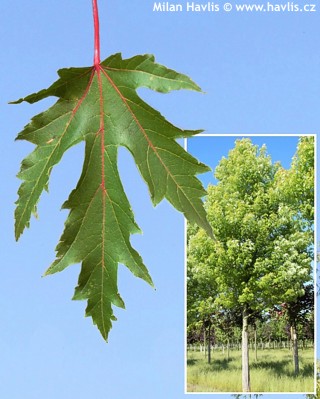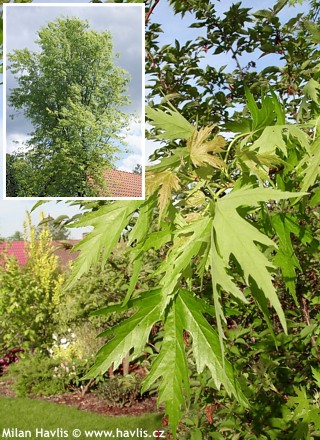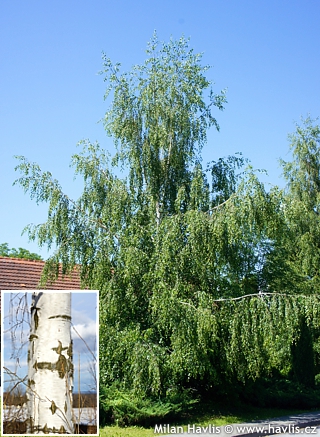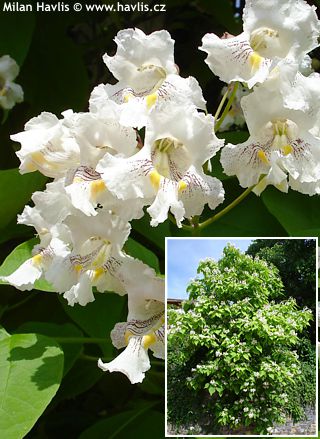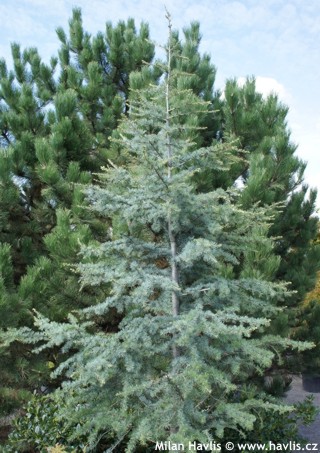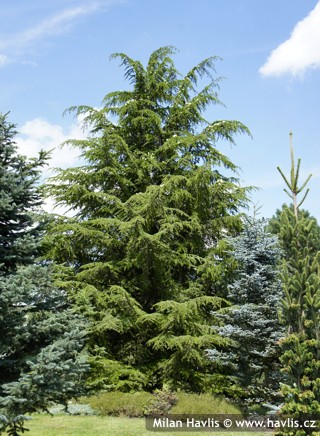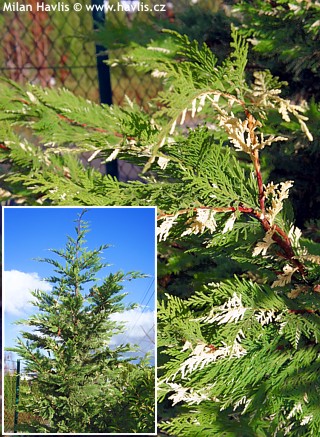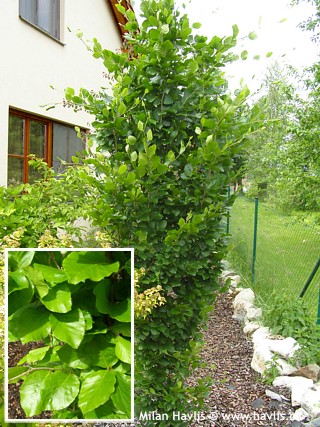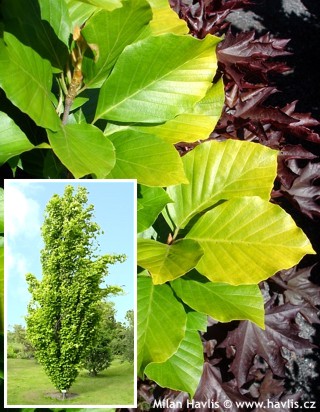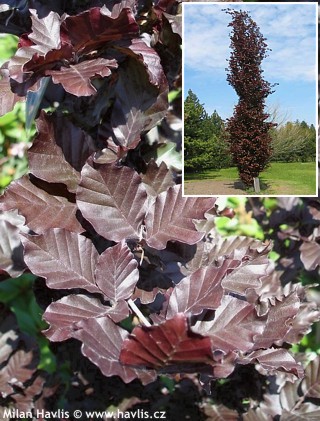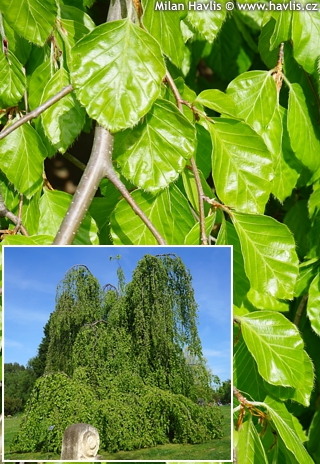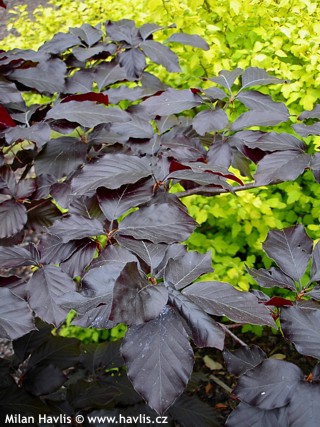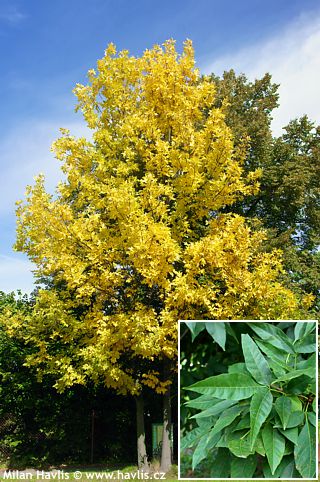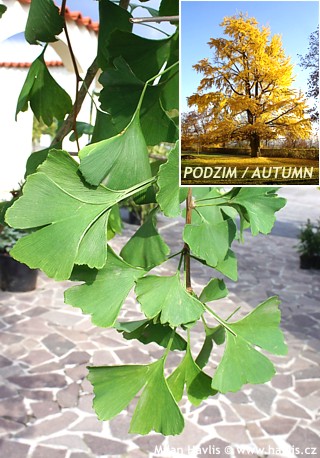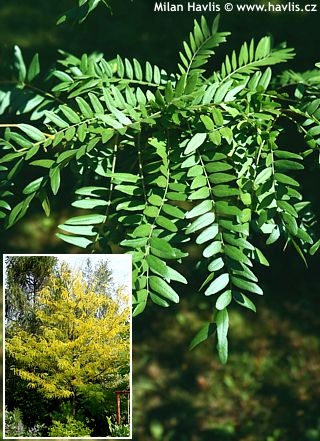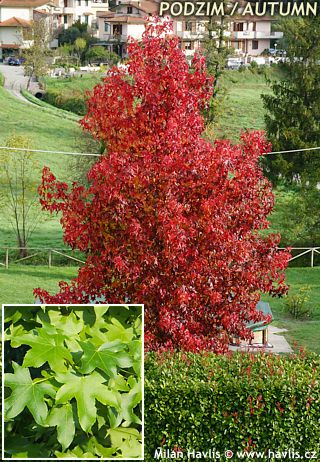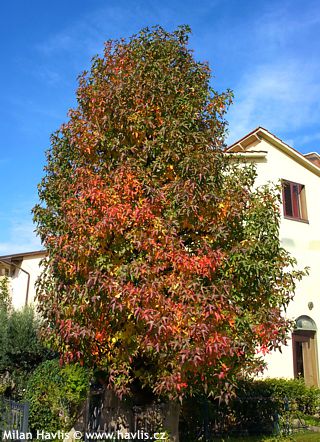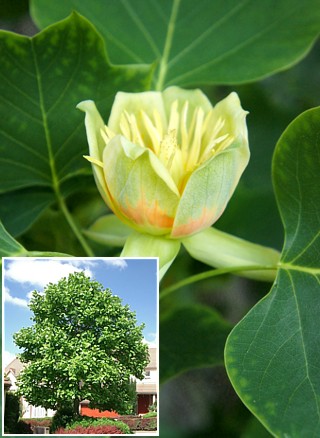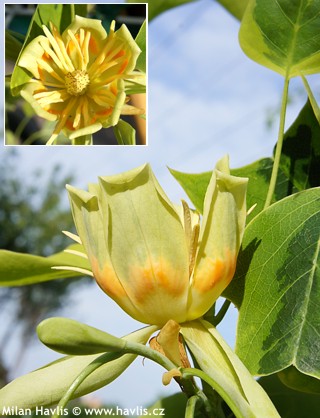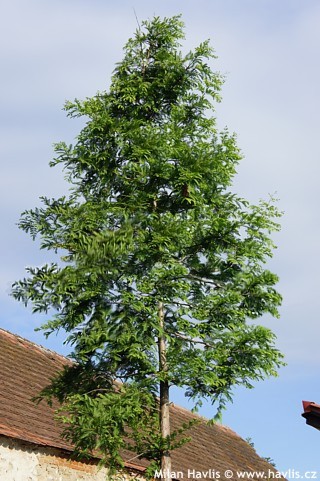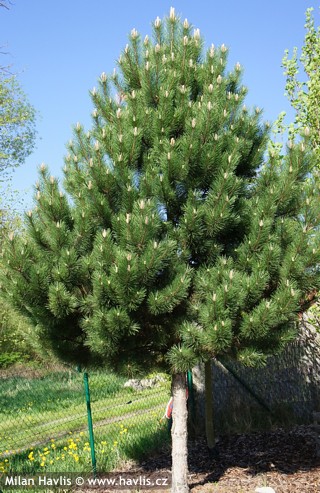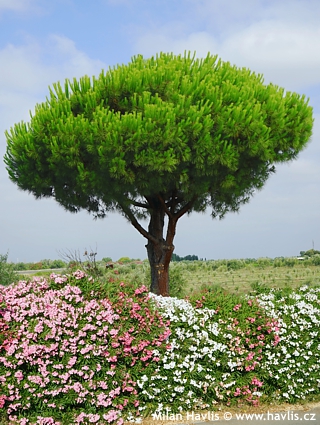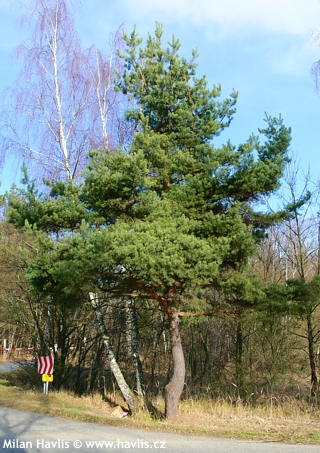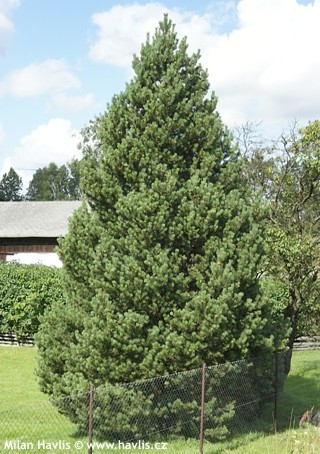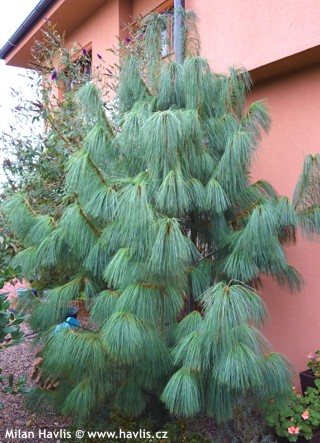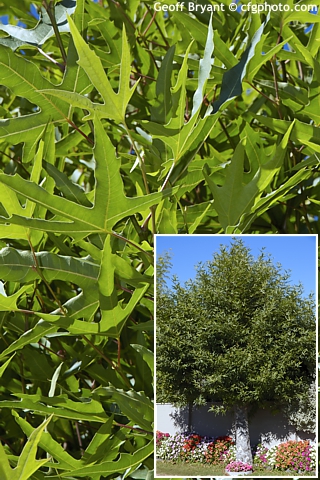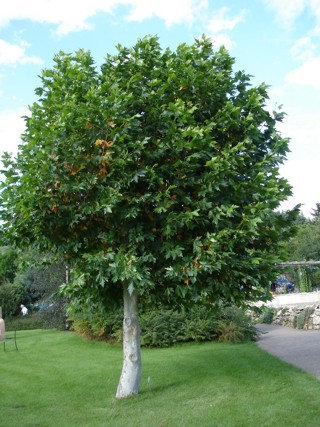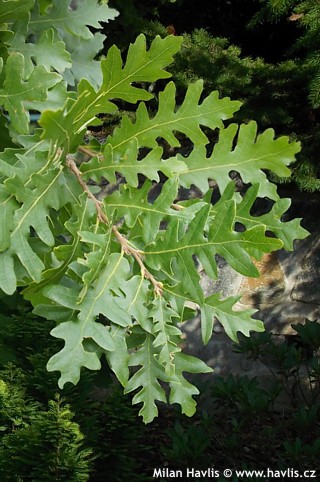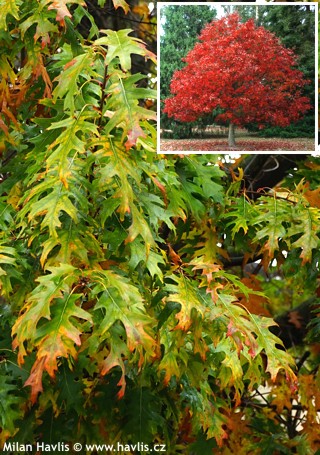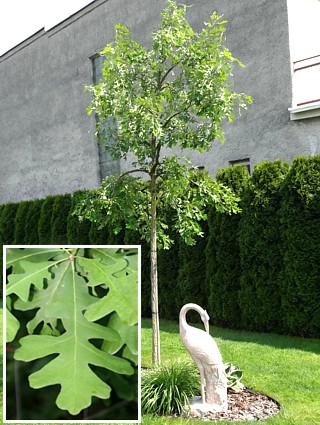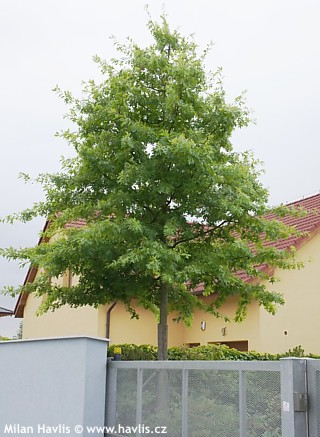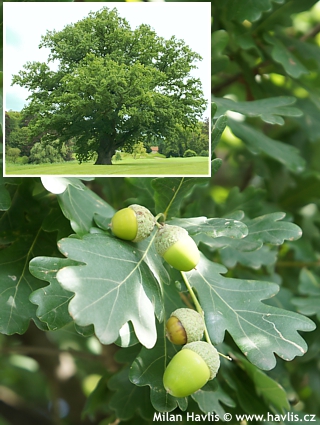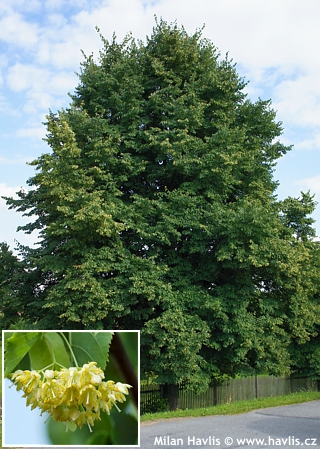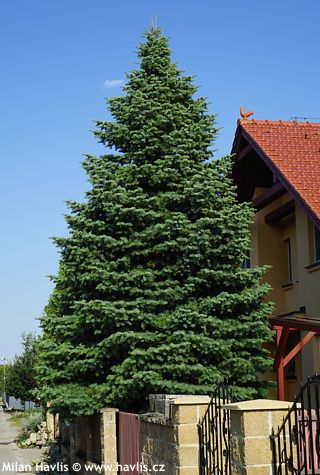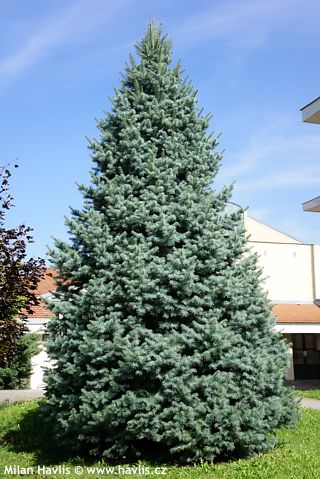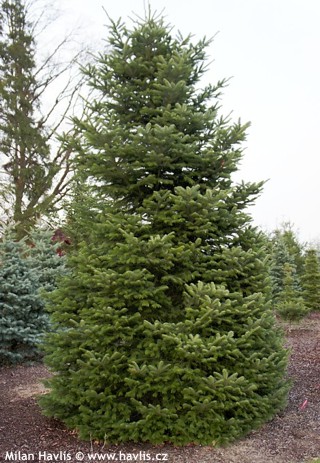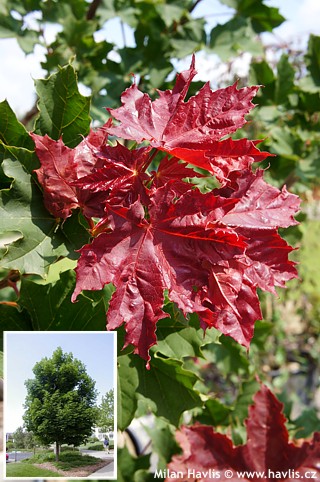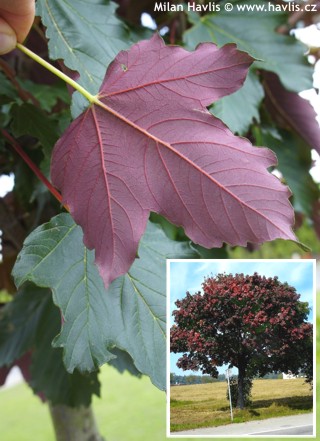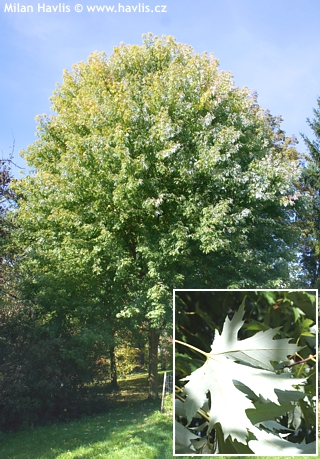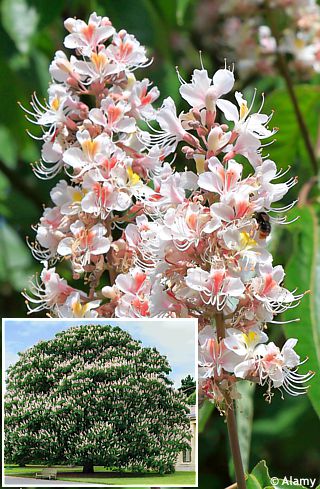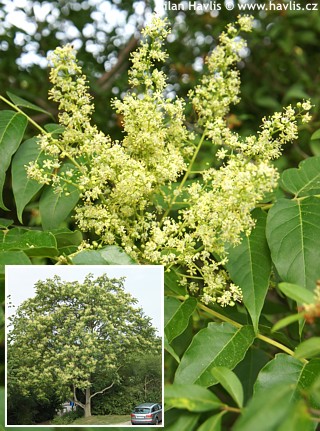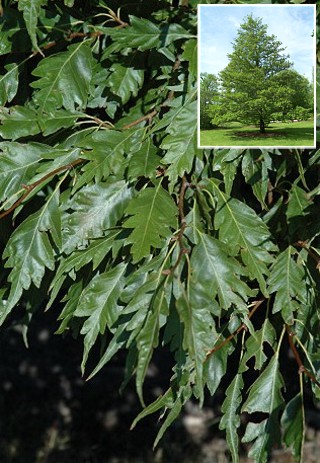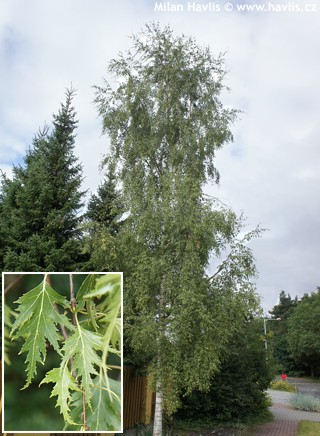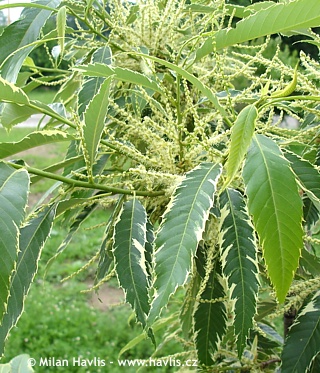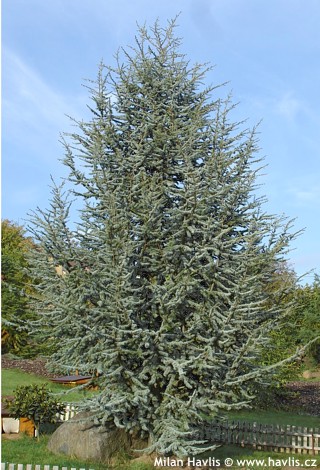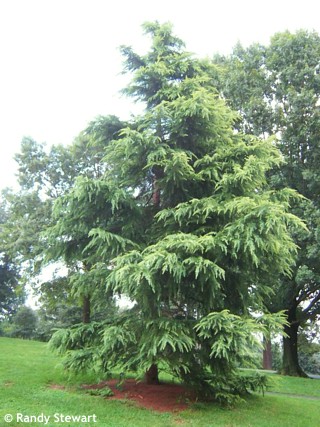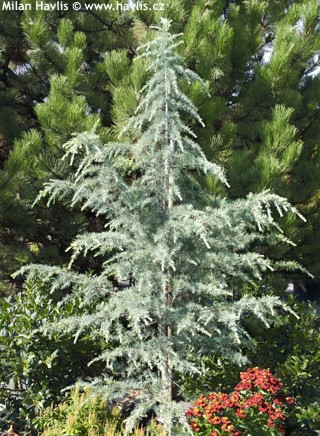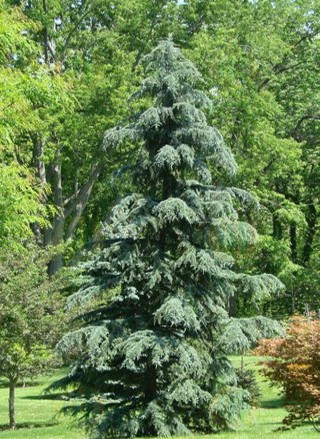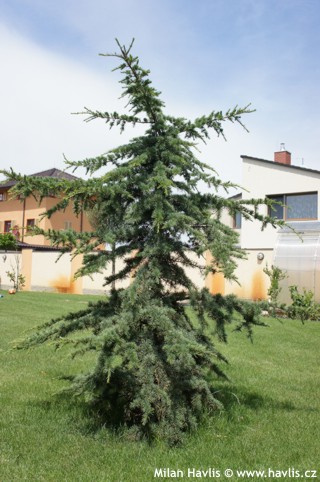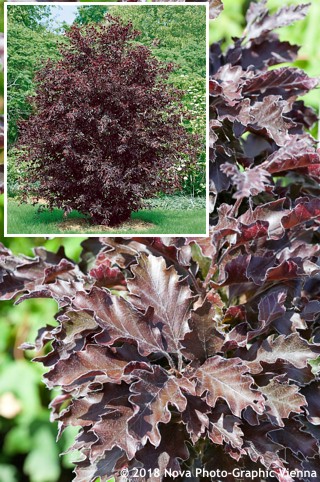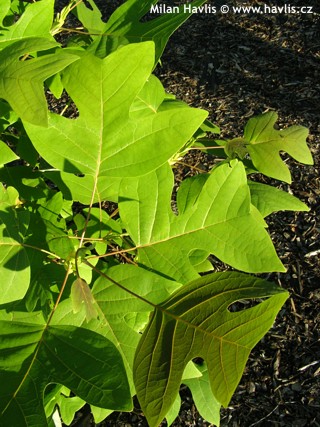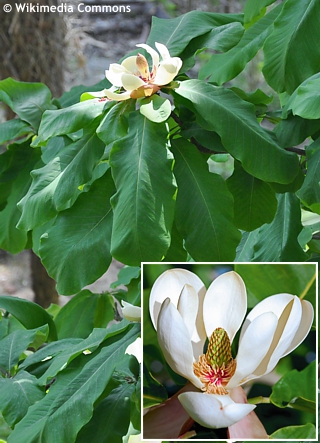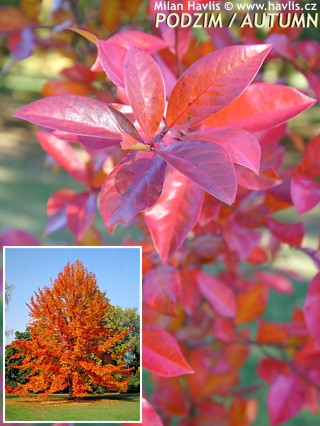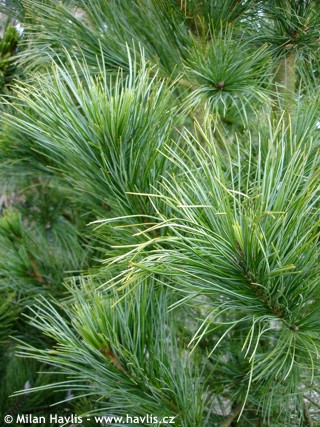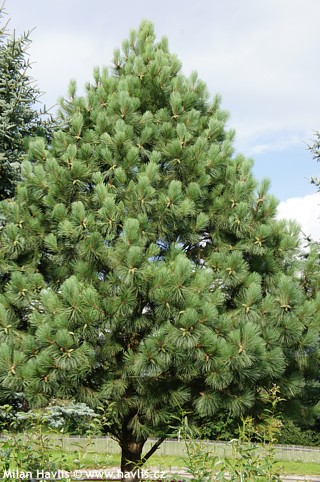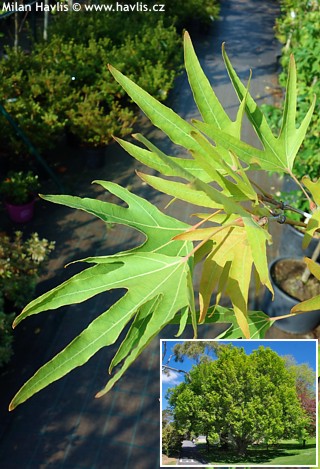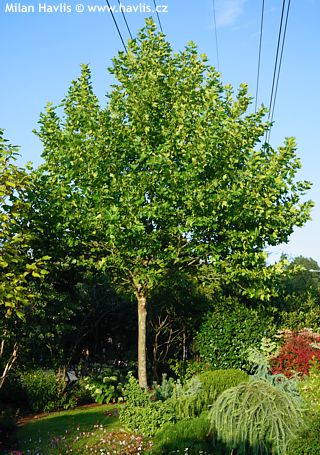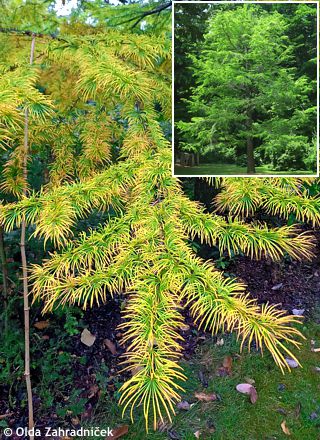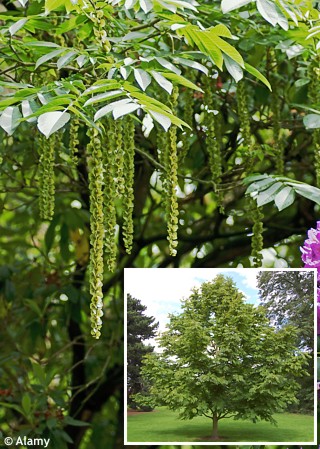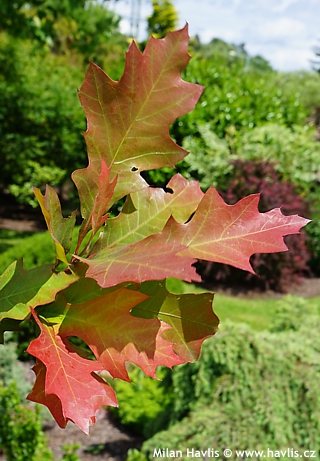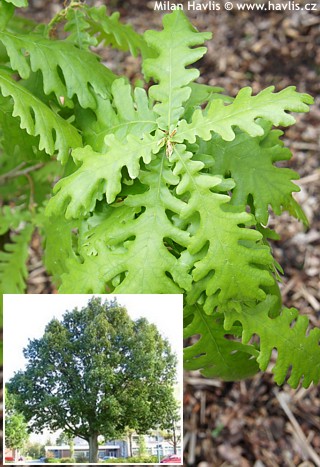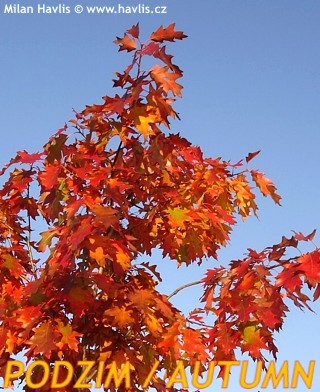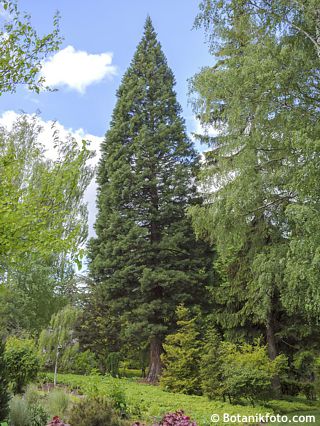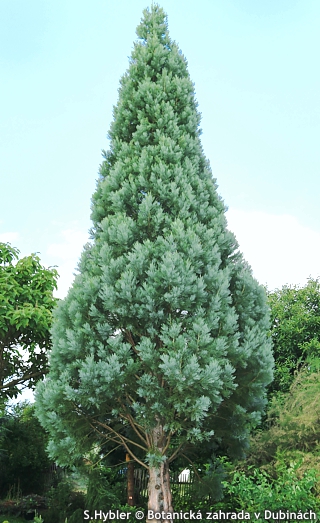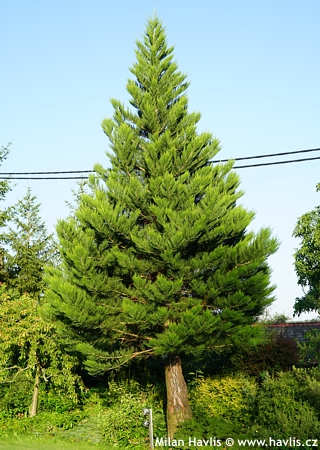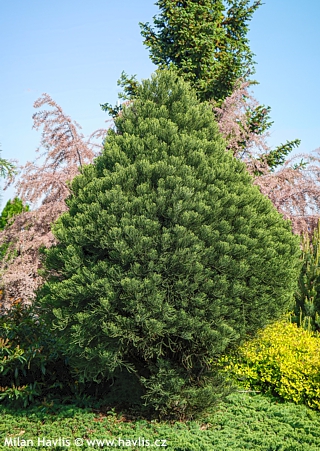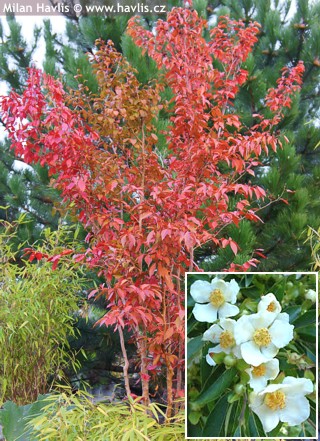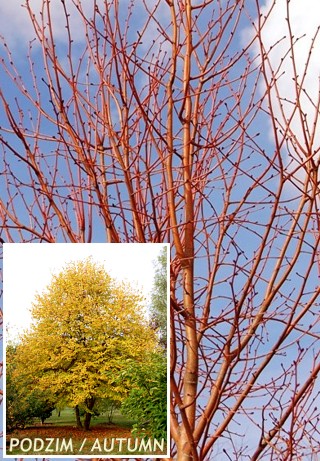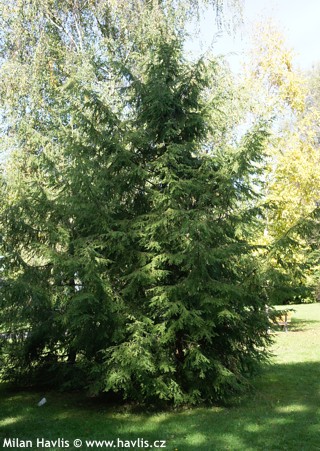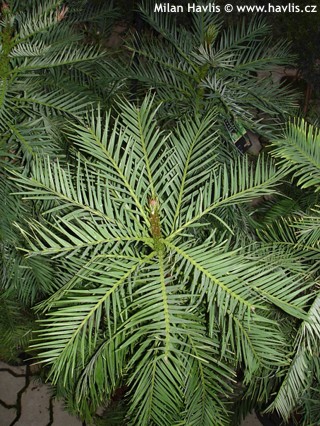CURRENTLY IN STOCK:
Field maple (and its varieties) is one of the most frequently planted trees in Czech urban landscapes. It is of European origin and has earned its success thanks to its high tolerance to all kinds of weather conditions as well as those brought upon by humans, and longevity. It is rated a medium-tall ...

6 - 10m

6 - 10m

full to partial sun

5 (down to -29°C)

for zone 5+6

for zone 7
Norway maple is a native European tree commonly cultivated in countries and regions with harsh winters. It is one of the most common street and park in Czech and Slovak republics. Its tolerance against pollution, low winter temperatures, and vigorous growth made it a useful tree for almost all place ...

15 - 25m

10 - 20m

full to partial sun

3 (down to -40°C)

for zone 5+6

for zone 7
Columnare is a slender form of Norway maple with deciduous, 10-15 cm across, broadly palmate leaves that are green in summer and turn golden orange and bright yellow in autumn. The crown is very narrow – only about 3m wide in 15-20 years, and rather dense. Pruning is usually not required but c ...

15 - 18m

3 - 5m

full to partial sun

for zone 5+6

for zone 7
Crimson King is a majestic looking maple tree for large gardens, parks, and city avenues. Its palmate leaves are dark crimson red, almost black, and glossy, turning orange-red in autumn. In the spring, just as leaves emerge, it flowers profusely with many small yellow flowers, typical for many Norwa ...

10 - 15m

5 - 9m

full to partial sun

3 (down to -40°C)

for zone 5+6

for zone 7
Royal Red is a majestic looking Norway maple for large gardens, parks, and city avenues. Its palmate leaves are dark crimson red, almost black, and glossy, turning amber orange or orange-red in autumn. In spring, just as leaves emerge, it flowers profusely with many small yellow flowers, typical for ...

10 - 20m

5 - 10m

full sun

3 (down to -40°C)

for zone 5+6

for zone 7
Sycamore tree is one of our native maple species and its natural habitat extends vertically from the north of Europe (with the exception of the northernmost peaty locations) to the mountainous areas of southern Europe, and horizontally from the colder parts of western Europe to the Caucasus. It is o ...

15 - 30m

10 - 20m

full to partial sun

3 (down to -40°C)

for zone 5+6

for zone 7
Red maple is one of the most spectacular big-sized trees suitable for large gardens, parks or city avenues. It has mid-sized leaves that are green in summer, changing to yellow, orange and predominantly red in autumn. Seedling vary with autumn shades.
It grows moderate fast into an almost regular ...

12 - 18m

5 - 9m

full sun to shade

3 (down to -40°C)

for zone 5+6

for zone 7
Red Sunset belongs to the top favourite scarlet maples. It makes eye-catching display of autumn colour. Its deciduous leaves are three-lobed, mid-sized, rich green in summer and bright scarlet red in autumn. It grows fast, forming a widely oval, upright canopy. The crown is dense and needs no traini ...

15 - 18m

9 - 12m

full to partial sun

3 (down to -40°C)

for zone 5+6

for zone 7
MORGAN is a beautifully coloured variety of scarlet maple, which was discovered in 2002 by Ray Tate from the Angel Creek Nursery in Bishop, Georgia, USA. It was a single mutation among a number of October Glory seedlings planted at a nearby nursery in Morgan County. Among the 58 existing varieties o ...

10 - 20m

6 - 12m

full to partial sun

3 (down to -40°C)

for zone 5+6

for zone 7
Pyramidale is a silver maple variety with attractive, deeply cut foliage with prominent red veins. The leaves are deciduous, rich green in summer, turning yellow, golden and orange-red in autumn. The tree forms a widely columnar canopy and is fast growing. Its branches may have a tendency to break, ...

12 - 18m

4 - 6m

full to partial sun

4 (down to -34°C)

for zone 5+6

for zone 7
This silver maple will draw your attention to the deeply cut leaves which resemble Japanese dissectum maples. The name silver describes the underneath of the leaves which are silvery gray and glitter in the wind.
In too fertile soil the branches can grow as much as 1 meter within one year and can ...

15 - 20m

6 - 12m

full to partial sun

4 (down to -34°C)

for zone 5+6

for zone 7
The species of European white birch is a large tree growing over 20m tall in maturity. Its most significant feature is white bark, pealing off in thin layers. Diamond-shaped leaves are mid green, partly glossy and are said to emerge only after the danger of all frosts. They turn yellow in autumn. Th ...

IV - IV

15 - 25m

5 - 10m

full sun

2 (down to -45°C)

for zone 5+6

for zone 7
Sweet chestnut is cultivated for several beautiful features. The deciduous leaves are deep green, elliptic to oblong, up to 20 cm long, distinctly serrated and glossy, turning deep golden yellow in autumn. Flowers are creamy beige catkins that appear in July. They release a rather strong fragrance ( ...

VII - VII

5 - 20m

5 - 10m

full to partial sun

5 (down to -29°C)

for zone 5+6

for zone 7
Catalpas have been grown in our country for many years. The species may be found in every larger city as an important feature of a city park. It offers outstanding points of interest such as large leaves in summer and long cigar-shaped seed pods in winter, hence its name Indian Bean Tree.
Flowers a ...

VI - VII

5 - 10m

3 - 5m

full sun

5 (down to -29°C)

for zone 5+6

for zone 7
Himalájský cedr is the most graceful of all cedars. Robusta Glauca is an Italian selection with long, evergreen needles. Their colour is from blue-green to almost silvery blue while new shoots are soft green. Robusta Glauca cedar is unique for its robust structure with strong stem and habit which is ...

10 - 15m

5 - 7m

full sun

5b (down to -27°C)

for zone 5+6

for zone 7
Cedar of Lebanon is a majestic specimen tree with needle-like dark green to blue-green foliage that looks like larch but is evergreen. Young trees are densely branched from the ground but low branches can be removed in the autumn if planted close to houses to make more room beneath. The branches are ...

10 - 20m

10 - 15m

full sun

5b (down to -27°C)

for zone 5+6

for zone 7
Leyland cypress is a hybrid genus between cupressus macrocarpa and chamaecyparis nootkatensis. It is a fast growing conifer, used mainly in hedges and as windbreak.
It produces flattened sprays of scale-like, dark green leaves. The branches are not pendent, not erect. Something in between and that ...

2 - 12m

2 - 4m

full to partial sun

7 (down to -23°C)

for zone 5+6

for zone 7
Dawyckii varieties of common beech are very popular for their habit and leaf colours. Dawyck Dawyck has upright, columnar habit, its initial slow growth changes after a few years to medium-fast, but never really fast. Deciduous leaves are vivid green, their colour retains their freshness almost thro ...

10 - 15m

1 - 3m

full to partial sun

4 (down to -34°C)

for zone 5+6

for zone 7
Dawyckii varieties of common beech are very popular for their habit and leaf colours. Dawyck Gold has upright, columnar habit, its initial slow growth changes after a few years to medium-fast, never really fast. Young leaves are bright yellowish green, turning to glowing grass green throughout the s ...

10 - 15m

1 - 3m

full to partial sun

4 (down to -34°C)

for zone 5+6

for zone 7
Dawyckii varieties of common beech are very popular for their habit and leaf colours. Dawyck Purple has upright, columnar habit, its initial slow growth changes after a few years to medium-fast, never really fast. Spring leaves are striking purple, colour slightly deepens throughout the summer. Lack ...

10 - 15m

1 - 3m

full sun

4 (down to -34°C)

for zone 5+6

for zone 7
Pendula is a weeping form of European beech first introduced by George Loddiges in his nursery in London, UK, in 1836. It bears deciduous, 6-10 cm long, broadly elliptic-ovate, glossy leaves that emerge bright green, mature to dark green in summer, and turn yellow and brown shades in autumn. Its wee ...

8 - 20m

5 - 15m

full to partial sun

4 (down to -34°C)

for zone 5+6

for zone 7
Riversii (syn. 'Purpurea Major') is a variety of European beech, a slow growing big tree with deep maroon leaves. They are elliptic-ovate, deciduous, emerge bright burgundy red, maturing to deep purple maroon and deep green inside the crown in summer, and eventually turn copper orange in autumn.
...

15 - 18m

5 - 10m

full sun

4 (down to -34°C)

for zone 5+6

for zone 7
Summit is a green ash variety sought-after for mostly two features: it is a male tree – not producing seeds and unwanted seedlings, and its vibrant autumn colour. The pinnate leaves are deciduous, composed of 5-9 broadly elliptic to narrowly ovate, deep green, not very glossy leaflets which tu ...

12 - 15m

7 - 12m

full sun

4 (down to -34°C)

for zone 5+6

for zone 7
Maidenhair tree is probably one of the oldest species on Earth. It was here some 180 million years ago … obviously it was the time when the Dead Sea was still ill. Its extreme tolerance of various conditions made it survive to our time. One tree can live as long as 2000 years.
It belongs to c ...

15 - 30m

full sun

3 (down to -40°C)

for zone 5+6

for zone 7
If you like elegant leaves tha are not as bold as London plane tree leaves for example, have look at this honey locust. It is called SKYLINE and as it belongs to inermis subspecies it represents a thornfree version of this beautiful tree.
Unlike its more popular brother SUNBURST with golden yellow ...

9 - 15m

3 - 6m

full sun

4 (down to -34°C)

for zone 5+6

for zone 7
Common walnut is a native tree of the Old World. Its natural habitat lies between South-eastern Europe and Himalayas. Irrespective of its large size it is still one of the most sought-after fruit trees of our country.
Walnut has attractive, pinnate foliage that have a unique scent. Flowers are cat ...

IV - V

5 - 20m

5 - 20m

full sun

5 (down to -29°C)

for zone 5+6

for zone 7
This is the species of sweetgum. Its maple-like, star-shaped leaves are medium-deeply or deeply cut and have fresh green colour. As it is reproduced mainly by seeds the plants often vary even if grown from seeds of the same parent. This results in plants having slightly different characteristics suc ...

8 - 15m

3 - 6m

full to partial sun

5 (down to -29°C)

for zone 5+6

for zone 7
Worplesdon is a popular sweetgum variety among both growers as well as customers. It is a reliable and hardy selection that grows well without any additional maintenance. It has deep green, deciduous leaves that are star-shaped, deeply lobed, often with a pair of small teeth beneath each tip. The mo ...

6 - 12m

3 - 6m

full sun

5 (down to -29°C)

for zone 5+6

for zone 7
Belonging to the same family as magnolia, common name tulip tree may be misleading since this name is often used for magnolias with saucer-shaped flowers. Hence gardeners rather use its other name yellow poplar. This is the tree with huge lyra-like, saddle-shaped leaves which do appear to miss a lob ...

VI - VII

25 - 30m

10 - 15m

full sun

5 (down to -29°C)

for zone 5+6

for zone 7
Belonging to the same family as magnolia, common name tulip tree may be misleading. This is the tree with huge lyre-shaped, deciduous leaves which do appear to miss a lobe. This variety is called Aureomarginatum because its leaves are decorated with broad creamy-yellow margins that turn light green ...

VI - VII

15 - 20m

6 - 10m

full sun

5 (down to -29°C)

for zone 5+6

for zone 7
Dawn redwood was believed to be extinct for centuries. Until first specimen were brought from China in 1941 and propagated throughout the world. It is a deciduous conifer which, thanks to its flat, fresh green needles, is often mistaken for swamp cypress (taxodium distichum). The needles are soft an ...

10 - 30m

2 - 4m

full to partial sun

4 (down to -34°C)

for zone 5+6

for zone 7
Austrian (black) pine was first classified by Austrian botanist Johann Arnold in 1785. It is a hardy tree which escaped Austria in early 20th century, and can now be found all around Europe, down to Turkey, and in North Africa. Hard to say if Mother Nature needed a stronger substitute for more tende ...

10 - 30m

6 - 8m

full to partial sun

3 (down to -40°C)

for zone 5+6

for zone 7
Being a plant lover based in Europe and perhaps a bit of a traveler, too, I suppose you must have been to the Mediterranean at least once in your life, am I right? And there, you must have come across one of the key features of the Mediterranean landscape apart from the Tuscan cypress – the It ...

10 - 20m

8 - 15m

full sun

8 (down to -18°C)

for zone 5+6

for zone 7
Scots pine is a European native pine species, and is native in our country, too. Its makes the most beautiful and at the same time the most bizarre specimens in the wild. It bears 5-7 cm long, mid green needles with a slight bluish overlay. They are borne in pairs and remain on the tree for 3 years ...

2 - 15m

2 - 6m

full sun

3 (down to -40°C)

for zone 5+6

for zone 7
Uncinata is a subspecies of mountain pine. Its main difference from dwarf mountain pine is a central leader which helps it make a tree character. Also, this pine is much taller in full maturity as opposed to common mountain pine, forming a widely pyramidal habit, slightly irregular. Uncinata is comm ...

10 - 20m

3 - 6m

full sun

2 (down to -45°C)

for zone 5+6

for zone 7
The Himalayan pine has extraordinary, upto 20 cm long needles (in bundles of 5), silvery blue colour, young needles are erect but as they mature they droop creating a pendulous effect. A magnificent specimen tree to draw passers-by’s attention. Will thrive in any semi-moist soil, always well-d ...

15 - 25m

8 - 12m

full sun

5 (down to -29°C)

for zone 5+6

for zone 7
Digitata is a naturally occurring form of oriental plane, now considered a variety. It was first described by British botanist George Henry (1806-1879) who also admitted that the tree had been put into commerce some 30 earlier by Loddiges, a significant nursery of 18th and 19th century renowned for ...

15 - 25m

15 - 20m

full sun

7 (down to -23°C)

for zone 5+6

for zone 7
Some trees have identity crisis and scientists are trying to trace up their true origin. As these efforts often end up in argumentative sessions we tend to choose the easiest possible explanation. In the case of this London plane tree we rather believe it comes from Cenozoic platanus aceroides and w ...

5 - 30m

4 - 20m

full sun

4 (down to -34°C)

for zone 5+6

for zone 7
Caucasian wing nut is one of my favorite trees. I first saw it growing in the castle garden of Třeboň chateau where it was ingeniously and logically placed as a focal point in the front of the main facade. And despite its size I knew immediately that I wanted to grow this „baby“ in my ga ...

V

15 - 20m

10 - 15m

full sun

5 (down to -29°C)

for zone 5+6

for zone 7
Turkey oak is a handsome mid-sized tree with lovely foliage. The leaves are fresh green until early summer, changing to mid green in summer and pale yellow in autumn. They are typically about 12 cm long, deeply lobed with rounded lobes, and glossy
It grows slowly or medium fast into a tree with rou ...

8 - 13m

5 - 13m

full to partial sun

7 (down to -23°C)

for zone 5+6

for zone 7
Scarlet oak comes from eastern parts of USA and is considered one of the toughest and long-lived species. It is quite difficult trying to differentiate it from closely related red oak (q.rubra) or pin oak (q.palustris) looking only at the leaves. Though quite variable, they are 15-20 cm long and dee ...

15 - 20m

10 - 15m

full sun

4 (down to -34°C)

for zone 5+6

for zone 7
Bur oak is renowned mainly for its furrowed bark of the trunk and ridged twigs with winged look and corky feeling when touched. Both bark and twigs are pale brown to grey. Deciduous leaves are rather large, up to 25 cm long, light to mid green, firm to almost leathery, deeply lobed towards the petio ...

6 - 15m

4 - 10m

full sun

3 (down to -40°C)

for zone 5+6

for zone 7
Pin oak is a beautiful large tree you can see growing in moist or boggy places. It has beautiful leaves, deeply lobed. They are deciduous, glossy green in summer and orange, red and burgundy purple in autumn. Pin oak is one of the most attractively coloured trees in autumn in the wild.
It grows qui ...

15 - 20m

8 - 12m

full sun

4 (down to -34°C)

for zone 5+6

for zone 7
Oaks are common trees of our natural woodlands. They border our ponds, occur naturally in our mixed forests, and make magnificent specimen trees in our parks and arboretums where less common species or rare varieties can be seen. English oak and sessile oak are the most common species of the Czech R ...

20 - 30m

15 - 20m

full sun

5 (down to -29°C)

for zone 5+6

for zone 7
Linden trees (limes) are generally large, long-lived plants that can be found in broad avenues, in parks or in old villages. Small-leaved lime was declared our national tree of the Czech Republic in 1848 and it is a national tree of Slovakia and Slovenia, too. It is native to Europe and Caucasus whe ...

VI - VII

15 - 25m

7 - 10m

full to partial sun

3 (down to -40°C)

for zone 5+6

for zone 7












